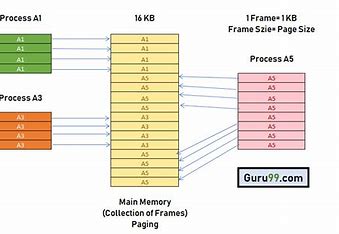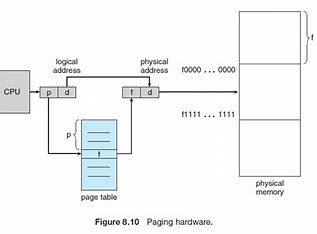PAGING TECHNIQUES
Paging
Paging is a memory management scheme that eliminates the need for contiguous allocation of physical memory. The process of retrieving processes in the form of pages from the secondary storage into the main memory is known as paging. The basic purpose of paging is to separate each procedure into pages. Additionally, frames will be used to split the main memory.This scheme permits the physical address space of a process to be non – contiguous.
Example:
If Logical Address = 31 bit, then Logical Address Space = 231 words = 2 G words (1 G = 230) If Logical Address Space = 128 M words = 27 * 220 words, then Logical Address = log2 227 = 27 bits If Physical Address = 22 bit, then Physical Address Space = 222 words = 4 M words (1 M = 220) If Physical Address Space = 16 M words = 24 * 220 words, then Physical Address = log2 224 = 24 bits
ADVANTAGES
Reduces internal fragmentation: Paging facilitates to lessen internal fragmentation by using allocating memory in fixed-size blocks (pages), which might be usually a whole lot smaller than the size of the process’s facts segments. This lets in for greater efficient use of memory in view that there are fewer unused bytes in each block. 2. Enables reminiscence to be allotted on call for: Paging enables memory to be allocated on call for, this means that that memory is most effective allocated when it’s far needed. This allows for extra efficient use of memory in view that only the pages that are absolutely used by the manner want to be allocated inside the physical memory.


